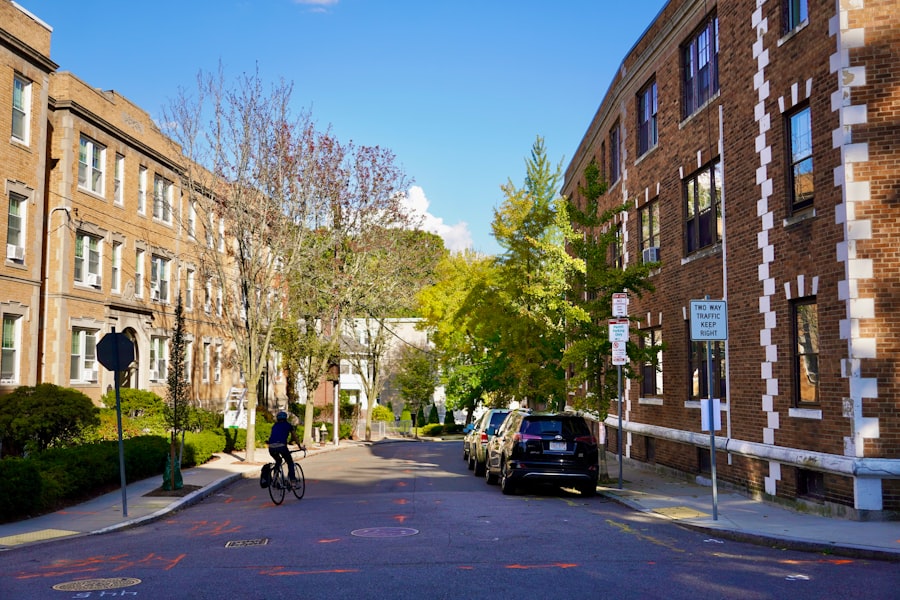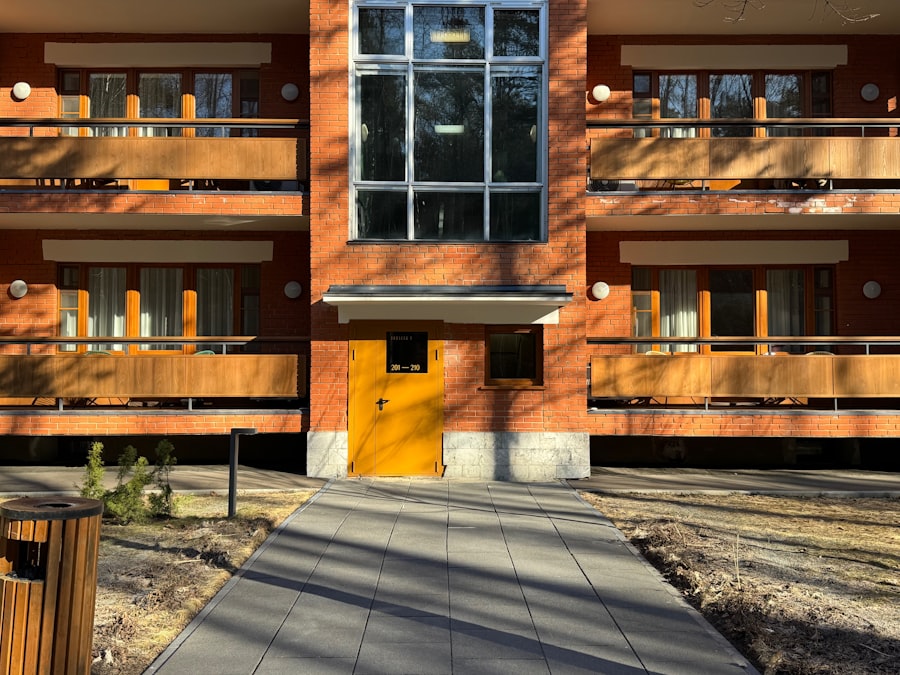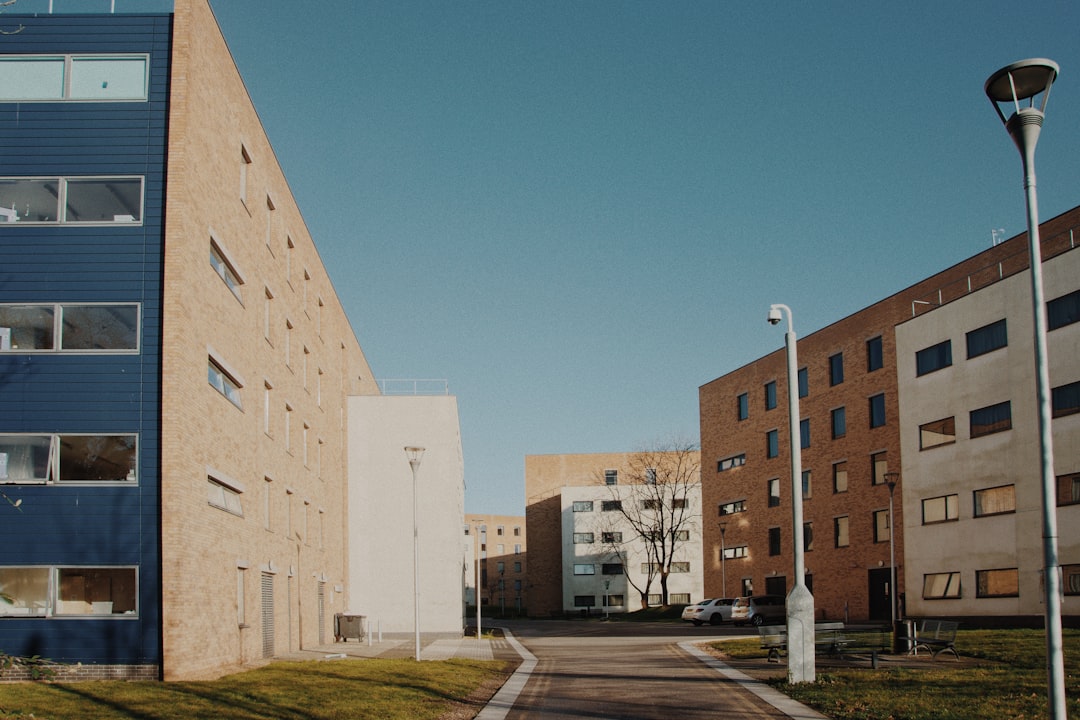Public Private Partnerships (PPPs) in student housing represent a collaborative approach where public institutions, such as universities and government entities, join forces with private developers and investors. This partnership model aims to leverage the strengths of both sectors to address the growing demand for quality student accommodations. As you delve into this topic, it becomes clear that the essence of PPPs lies in their ability to combine public interest with private efficiency.
By pooling resources, expertise, and capital, these partnerships can create innovative housing solutions that meet the needs of students while also ensuring financial viability. In recent years, the landscape of higher education has evolved significantly, leading to an increased focus on student housing. With rising enrollment numbers and a growing emphasis on student experience, universities are under pressure to provide adequate and appealing living arrangements.
This is where PPPs come into play. They allow institutions to tap into private sector efficiencies and funding mechanisms, enabling them to develop modern facilities without bearing the entire financial burden. As you explore this model further, consider how it not only addresses immediate housing needs but also fosters long-term relationships between educational institutions and private entities.
Key Takeaways
- Public Private Partnerships (PPPs) combine public oversight and private sector efficiency to improve student housing availability and quality.
- Successful PPP models leverage shared resources and expertise to address affordability and infrastructure challenges in student housing.
- The public sector plays a crucial role in regulation, funding, and ensuring equitable access, while the private sector drives innovation and operational management.
- Addressing risks such as financial uncertainties and regulatory compliance is essential for sustainable PPPs in student housing.
- Emerging trends in PPPs focus on innovative financing, sustainable design, and technology integration to enhance student living experiences.
Identifying the Benefits of Public Private Partnerships for Student Housing
The benefits of Public Private Partnerships in student housing are manifold, making them an attractive option for many educational institutions. One of the most significant advantages is the financial relief they provide. By engaging private partners, universities can access additional funding sources that may not be available through traditional public financing methods.
This can lead to the development of high-quality housing facilities that might otherwise be financially unfeasible. As you reflect on this aspect, think about how this financial flexibility can lead to improved living conditions for students. Moreover, PPPs often result in enhanced operational efficiencies.
Private developers typically bring a wealth of experience in construction, management, and maintenance, which can lead to better-designed facilities and more effective management practices. This expertise can translate into improved services for students, such as better maintenance response times and enhanced amenities. As you consider these operational benefits, it’s essential to recognize how they contribute to a more positive student experience, ultimately impacting retention and satisfaction rates.
Exploring Successful Models of Public Private Partnerships in Student Housing

Examining successful models of Public Private Partnerships in student housing reveals a variety of approaches tailored to meet specific institutional needs. One notable example is the partnership between universities and private developers to create mixed-use developments that integrate student housing with retail and community spaces. This model not only provides students with convenient access to essential services but also fosters a vibrant campus life.
As you analyze these models, think about how they can enhance the overall student experience by creating a sense of community. Another successful approach involves long-term lease agreements where universities retain ownership of the land while allowing private entities to develop and manage the housing facilities. This model ensures that the institution maintains control over its assets while benefiting from the expertise and efficiency of private partners.
As you explore these various models, consider how they can be adapted to different contexts and institutional goals, ultimately leading to innovative solutions that address the unique challenges faced by each university.
Evaluating the Role of the Public Sector in Student Housing Partnerships
| Metric | Description | Public Sector Role | Impact on Student Housing | Example Data |
|---|---|---|---|---|
| Funding Contribution | Amount of financial support provided by public entities | Grants, subsidies, low-interest loans | Enables affordable housing development | 30% of total project cost |
| Regulatory Support | Policies and zoning adjustments facilitating housing projects | Streamlining permits, zoning changes | Reduces project delays and costs | Average permit approval time reduced by 40% |
| Partnership Initiatives | Collaborations between public agencies and private developers | Joint ventures, public-private partnerships | Increases housing supply and quality | 15 new projects initiated in last 3 years |
| Student Affordability Index | Measure of housing cost relative to student income | Subsidies and rent control policies | Improves access to affordable housing | Rent-to-income ratio decreased from 35% to 28% |
| Occupancy Rates | Percentage of student housing units occupied | Support in marketing and allocation | Indicates demand and project success | 95% average occupancy rate |
| Community Impact | Effect on local neighborhoods and infrastructure | Investment in infrastructure and services | Enhances livability and integration | 20% increase in local public transport usage |
The public sector plays a crucial role in shaping the landscape of Public Private Partnerships in student housing. Government entities and educational institutions are responsible for establishing the framework within which these partnerships operate. This includes setting policies, regulations, and standards that ensure accountability and transparency throughout the partnership process.
As you evaluate this role, consider how effective governance can lead to successful outcomes for both students and institutions. Additionally, public sector involvement is vital in addressing social equity concerns related to student housing. By prioritizing affordable housing options within PPP agreements, public institutions can ensure that all students have access to safe and suitable living arrangements.
This commitment to inclusivity not only enhances the reputation of educational institutions but also contributes to a more diverse and vibrant campus community. As you reflect on these responsibilities, think about how public sector engagement can drive positive change in student housing.
Examining the Role of the Private Sector in Student Housing Partnerships
The private sector’s role in Public Private Partnerships for student housing is equally significant, as it brings innovation, efficiency, and capital investment into the equation. Private developers are often at the forefront of designing and constructing modern housing facilities that cater to the evolving needs of students. Their ability to respond quickly to market demands allows them to create spaces that are not only functional but also appealing to prospective residents.
Moreover, private partners often introduce advanced technologies and sustainable practices into student housing projects. From energy-efficient designs to smart home features, these innovations can significantly improve the quality of life for students while also reducing operational costs for institutions.
As you explore these advancements, think about how they align with broader trends in sustainability and technology within higher education, ultimately shaping the future of student living.
Addressing the Challenges and Risks of Public Private Partnerships in Student Housing

While Public Private Partnerships offer numerous benefits, they are not without challenges and risks that must be carefully managed. One significant concern is the potential misalignment of goals between public institutions and private partners. Universities may prioritize affordability and accessibility for students, while private developers might focus on maximizing profits.
This divergence can lead to conflicts that undermine the partnership’s effectiveness. As you address these challenges, consider how clear communication and shared objectives can help bridge these gaps. Another challenge lies in navigating complex regulatory environments.
Public Private Partnerships often involve multiple stakeholders, including government agencies, educational institutions, and private entities, each with its own set of regulations and requirements. This complexity can lead to delays and increased costs if not managed effectively. As you reflect on this issue, think about how proactive planning and collaboration among all parties can mitigate these risks and ensure smoother project execution.
Implementing Best Practices for Maximizing Student Housing through Public Private Partnerships
To maximize the potential of Public Private Partnerships in student housing, it is essential to implement best practices that foster collaboration and innovation. One effective strategy is engaging stakeholders early in the planning process. By involving students, faculty, and community members from the outset, institutions can gain valuable insights into their needs and preferences.
This inclusive approach not only enhances project outcomes but also builds trust among all parties involved. As you consider this practice, think about how it can lead to more responsive and effective housing solutions. Additionally, establishing clear performance metrics is crucial for evaluating the success of PPP projects.
By setting measurable goals related to affordability, occupancy rates, and student satisfaction, institutions can hold private partners accountable while ensuring that projects align with their mission and values. As you explore this aspect further, consider how data-driven decision-making can enhance transparency and foster continuous improvement within student housing partnerships.
Analyzing the Financial Considerations of Public Private Partnerships in Student Housing
Financial considerations play a pivotal role in shaping Public Private Partnerships for student housing. Understanding funding mechanisms is essential for both public institutions and private developers as they navigate project financing options. Traditional financing methods may include bonds or government grants; however, innovative funding models such as social impact bonds or tax increment financing are gaining traction in this space.
As you analyze these financial aspects, think about how diverse funding sources can enhance project feasibility and sustainability. Moreover, it is crucial to assess the long-term financial implications of PPP agreements on both parties involved. While private developers may seek short-term returns on investment, public institutions must consider the broader impact on their budgets and resources over time.
This includes evaluating ongoing maintenance costs, operational efficiencies, and potential revenue generation from housing operations. As you reflect on these financial dynamics, consider how strategic planning can lead to mutually beneficial outcomes for all stakeholders involved.
Assessing the Impact of Public Private Partnerships on Student Housing Quality and Affordability
The impact of Public Private Partnerships on student housing quality and affordability is a critical area of examination as you explore this topic further. On one hand, partnerships with private developers often lead to improved quality through modern designs and amenities that enhance the overall living experience for students. These developments can include features such as fitness centers, study lounges, and communal spaces that foster social interaction among residents.
As you assess this impact, think about how these enhancements contribute to a more enriching academic environment. On the other hand, affordability remains a pressing concern within student housing markets across many regions. While PPPs can lead to high-quality developments, there is a risk that rising costs may outpace students’ financial capabilities.
It is essential for public institutions to negotiate terms that prioritize affordability within partnership agreements while still allowing private partners to achieve reasonable returns on investment. As you reflect on this balance between quality and affordability, consider how effective policy frameworks can help ensure equitable access to quality housing for all students.
Understanding the Legal and Regulatory Framework for Public Private Partnerships in Student Housing
Navigating the legal and regulatory framework surrounding Public Private Partnerships in student housing is essential for successful project implementation. Each jurisdiction may have its own set of laws governing PPPs, which can influence everything from procurement processes to contract negotiations.
As you delve into this topic further, think about how legal clarity can facilitate smoother collaboration between stakeholders. Additionally, compliance with zoning laws and building codes is paramount when developing new student housing projects through PPPs. Ensuring that all developments adhere to local regulations not only mitigates legal risks but also promotes community acceptance of new projects.
As you explore this aspect further, consider how proactive engagement with local authorities can foster positive relationships that benefit both students and surrounding communities.
Looking Towards the Future: Innovations and Trends in Public Private Partnerships for Student Housing
As you look towards the future of Public Private Partnerships in student housing, several innovations and trends are emerging that promise to reshape this landscape significantly. One notable trend is the increasing focus on sustainability within housing developments. With growing awareness around environmental issues, many universities are prioritizing green building practices that minimize their carbon footprint while providing students with eco-friendly living spaces.
As you reflect on this trend, think about how sustainability initiatives can enhance institutional reputations while attracting environmentally conscious students. Another exciting development is the integration of technology into student housing through smart building solutions. From energy management systems to mobile applications that streamline communication between residents and management teams, technology is transforming how students interact with their living environments.
As you explore these innovations further, consider how they can enhance convenience and improve overall quality of life for residents while also providing valuable data insights for property managers. In conclusion, Public Private Partnerships represent a dynamic approach to addressing the challenges associated with student housing today. By understanding their complexities—ranging from financial considerations to stakeholder roles—you can appreciate their potential impact on enhancing quality while ensuring affordability for students across various educational institutions.
Public-private partnerships (PPPs) in student housing have become an increasingly popular model for addressing the growing demand for affordable and quality accommodations on college campuses. These collaborations can leverage private investment to enhance the living experience for students while alleviating financial pressures on educational institutions. For a deeper understanding of how these partnerships can be structured and their potential benefits, you can read more in this related article: Student Housing Public-Private Partnerships.
WATCH THIS! EXPOSED: The Tax-Free Real Estate Empire Funded By Your Student Loans
FAQs
What are public-private partnerships in student housing?
Public-private partnerships (PPPs) in student housing are collaborative agreements between government entities (such as universities or local authorities) and private sector companies to develop, finance, and manage student accommodation facilities.
Why are public-private partnerships used for student housing?
PPPs are used to leverage private sector expertise, funding, and efficiency to address the growing demand for quality student housing, while reducing the financial burden on public institutions.
Who are the typical partners in student housing PPPs?
Typical partners include universities or government bodies representing the public sector, and private developers, investors, or property management firms from the private sector.
How is risk shared in student housing public-private partnerships?
Risk is usually allocated based on each partner’s expertise and capacity; for example, the private partner may assume construction and operational risks, while the public partner may provide land or regulatory support.
What are the benefits of public-private partnerships in student housing?
Benefits include increased investment in student accommodation, improved quality and variety of housing options, faster project delivery, and potential cost savings for public institutions.
Are there any challenges associated with student housing PPPs?
Challenges can include complex contract negotiations, aligning public and private sector goals, ensuring affordability for students, and managing long-term maintenance and operations.
How is affordability ensured in student housing PPP projects?
Affordability can be addressed through contractual agreements that set rent caps, government subsidies, or by designing projects that balance cost recovery with student needs.
Can public-private partnerships be used for both on-campus and off-campus student housing?
Yes, PPPs can be applied to develop both on-campus and off-campus student housing facilities, depending on the needs and resources of the institution and community.
What is the typical duration of a student housing public-private partnership?
The duration varies but often ranges from 20 to 50 years, covering the design, construction, operation, and maintenance phases of the housing project.
How do public-private partnerships impact the quality of student housing?
PPPs often lead to higher quality housing due to private sector innovation, professional management, and performance-based contracts that incentivize maintaining standards.
